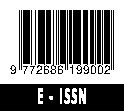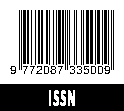Uji Uses and Gratifications dalam Intensitas Menonton Program Talk Show Melalui Televisi
Abstract views: 3936 | PDF downloads: 3689
Abstract
A survey of media consumption in several cities throughout Indonesia shows that television use still dominates. The results of a survey conducted by the Indonesian Broadcasting Commission explained that television programs considered to have quality with a high standard value of 3.04 were talk show programs. The purpose of this study is to examine the use of media and its underlying relationships based on the standpoint of the uses and gratification theory. This research uses theories of uses and gratification. The theory of uses and gratification considers that mass media do not have the power to influence the audience, but the audience using mass media is certainly based on different needs. An explanatory quantitative approach is used in this study to explain a social phenomenon that can be measured. Correlation test results in this study explained that the entertainment satisfaction obtained by respondents did not come from the intensity of the respondents when watching talk show s through television media, but the high level of entertainment satisfaction obtained by respondents came from the magnitude of the desired information motive.
References
Abdullah, A., & Puspitasari, L. (2018). Media Televisi di Era Internet. ProTVF, 2(1), 101.
Dewi, C. T. (2001). Kompetisi Antara Stasiun Televisi di Indonesia (Analisis dan Aplikasi Teori Niche dan User Gratification dalam Penelitian Tentang Kompetisi Antara RCTI, SCTV, dan Indosiar). Jakarta: Universitas Indonesia.
Haqqu, R. (2019). Pengaruh Penggunaan Media Terhadap Hubungan Antara Motif Dengan Kepuasan Menonton Program Acara Talk Show Melalui Televisi dan Youtube (Studi Korelasi dan Asosiasi di Kalangan Mahasiswa S1 Ilmu Komunikasi Universitas Sebelas Maret Angkatan 2015 Sampai 201. In Universitas Sebelas Maret (Vol. 1, Issue 1).
Hetharia, B. (2013). Motif dan Kepuasan Penggunaan Blackberry di Lingkungan Seskoau Lembang. Surakarta: Universitas Sebelas Maret.
Komara, I. (2017, Desember 21). news.detik.com. Retrieved from detikNews: https://news.detik.com/berita/d-3780733/survei-kualitas-siaran-tv-kpi-program-infotainment-paling-rendah
Kriyantono, R. (2010). Teknik Praktis Riset Komunikasi. Jakarta: Kencana Prenada Media Group.
Littlejohn, S. W., & Foss, K. A. (2010). Theories off Human Coummunication. USA: Waveland Press.
Littlejohn, S. W., Foss, K. A., & Oetzel, J. G. (2017). Theories Of Human Communication (Eleventh ed.). USA: Waveland Press.
Lometti, G. E., Reeves, B., & Bybee, C. R. (1977). Investigating the assumptions of uses and gratifications research. Communication Research 4(3), 321-338.
Lubis, M. (2017). Nielsen. Retrieved Januari 5, 2018, from www.nielsen.com: http://www.nielsen.com/id/en/press-room/2017/TREN-BARU-DI-KALANGAN-PENGGUNA-INTERNET-DI-INDONESIA.print.html
McQuail, D. (1991). Teori Komunikasi Massa. Jakarta: Erlangga.
McQuail, D. (1996). Teori Komunikasi Massa. Jakarta: Erlangga.
Naab, T. K., & Schnauber, A. (2014). Habitual initiation of media use and a response-frequency measure for its examination. Media Psychology, 19(1), 126-155.
Nuruddin. ( 2007). Pengantar Komunikasi Massa. Jakarta: Rajawali Pers.
Permana, R. S. M., Abdullah, A., & Mahameruaji, J. N. (2019). Budaya Menonton Televisi di Indonesia: Dari Terrestrial Hingga Digital. ProTVF, 3(1), 53.
Rosengren, K. E., Wenner, L. A., & Palmgreen, P. (1985). Media Gratifications Research. USA: Sage Publications Inc.
Santoso, E., & Setiansah, M. (2010). Teori Komunikasi. Yogyakarta: Graha Ilmu.
Sianipar, A. P. (2013). Pemanfaatan Youtube di Kalangan Mahasiswa (Studi Penggunaan Youtube di Kalangan Mahasiswa Ilmu Komunikasi FISIP USU dengan Pendekatan Uses and Gratification. Jurnal Ilmu Komunikasi FLOW, Vol 2 (3), 1-10.
Wibowo, F. (2007). Teknik Produksi Program Televisi. Yogyakarta: Pinus Book Publisher.




















